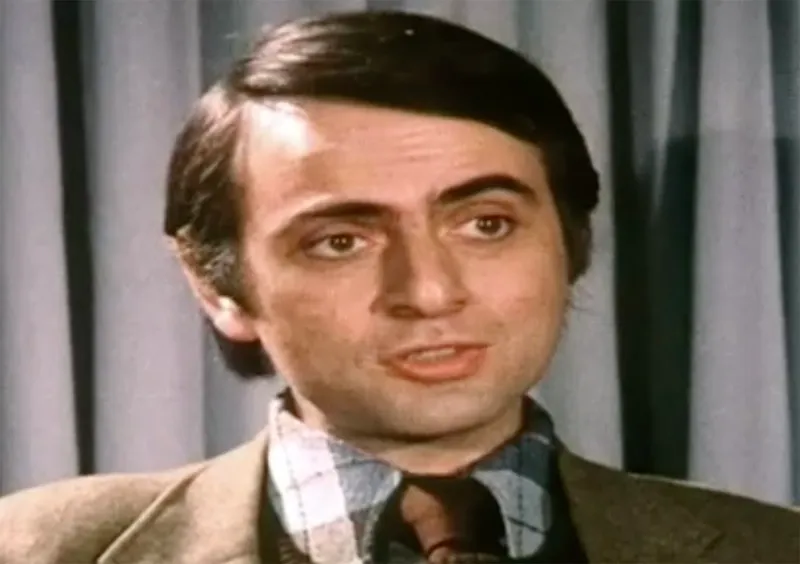On the 15 May 1974 episode of The Sky at Night, British astronomer Patrick Moore spoke with US astronomer Carl Sagan about the many investigative strands that would need to be pursued when looking for alien life.
And, perhaps unsurprisingly, Sagan's views on the future of the search for extra-terrestrial life were remarkably prophetic, accurately reflecting how scientists really are searching for life beyond Earth, 50 years later.
"One is laboratory work on the question of the origin of life, making the molecules which [would]… lead eventually to us," Sagan says in the interview.
Today, lab work investigates how molecules present at our planet’s birth could grow into the complex chemistry seen today.

"Second is a study of the organic chemistry in places like Jupiter, comets and the interstellar medium," he says.
"It’s remarkable that the molecules of life are littering the cosmos."
Organics have been found on Mars, moons, asteroids, comets, even Pluto, as well as the planet-forming discs around young stars.
"Thirdly, the exploration of neighbouring planets, in particular for life-related compounds."
Much research in this field has focused on Mars, culminating in the Perseverance rover which will return samples to Earth in the 2030s.
Now interest is turning to the icy moons, with planned missions to Europa and Titan.
"Then there’s the serious work – long-term, patient, cautious – of investigating other stars for potential signals being sent our way," says Sagan in the interview, who founded the SETI Institute which searches for signals, though none have been found.
One area Sagan didn’t consider was the study of exoplanets. The first wouldn’t be discovered for 15 years, but they’re now key to the search.
You can watch a clip of the Carl Sagan Patrick Moore interview via the BBC iPlayer.
